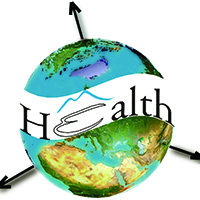Risk mapping and estimation of COVID-19 transmission in South Sulawesi, Indonesia by a self-identification survey

All claims expressed in this article are solely those of the authors and do not necessarily represent those of their affiliated organizations, or those of the publisher, the editors and the reviewers. Any product that may be evaluated in this article or claim that may be made by its manufacturer is not guaranteed or endorsed by the publisher.
Authors
The rapid transmission rate of coronavirus disease 2019 (COVID-19) is multi-factorial but primarily due to population mobility and aggregation. This research aimed at estimating the rate based on risk mapping and investigation of geospatial distribution. It was divided into different phases that included data collection through a self-identification form available online; data validation of the data collected; application of spatial statistics; comparison with official numbers of positive COVID-19; and mapping of the results. The results show that self-identification based on procurement of independent personal data online had an accuracy of 89%.
How to Cite

This work is licensed under a Creative Commons Attribution-NonCommercial 4.0 International License.
PAGEPress has chosen to apply the Creative Commons Attribution NonCommercial 4.0 International License (CC BY-NC 4.0) to all manuscripts to be published.













